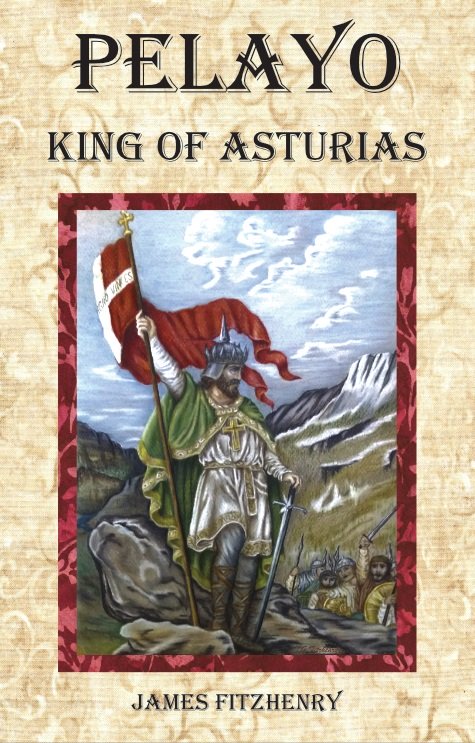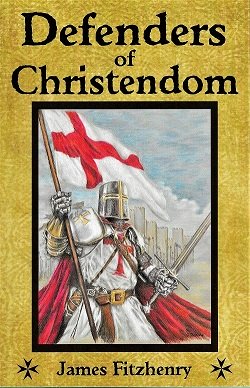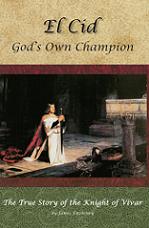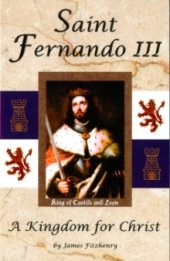Saint Olav
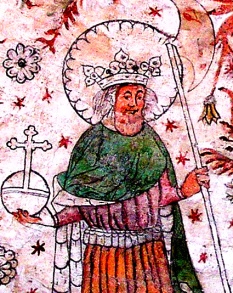
Two Olavs: The Conversion of the Norsemen
by Colleen Drippe’
The greatest tasks often fall into the most unlikely hands. To be sure, God has His orderly and conventional saints – gentle Saint Francis, learned St. Dominic, the virgin martyrs and the desert fathers. But then there are those great, ham-fisted barbarians who, somehow, are transformed by grace into mighty instruments for the conversion of whole nations. Sometimes, as was the case with St. Olav Haraldson, they have to build the nation first. But that is getting ahead of things.
Norway’s first taste of Christianity came during the reign of King Haakon the Good (938-961), who brought in gentle missionaries and high hopes. Unfortunately, these first efforts did not touch the real spirit of the people, who were far from gentle.
It was not until the reign of King Olav Tryggvason (a reformed Viking) that the country – the coastal regions, at least – became nominally Christian. King Olav was – he hoped – a great-grandson of Harald Fairhair, the first King of Norway. It was on this that he later based his claim to the throne. Historical records of these times are sketchy, owing to the fact that northerners were not yet very literate. Most of our information about Olav’s early life comes from sagas which were the accepted mode of remembering historical events. These were written down from oral tradition almost two centuries after he died.
As the story goes, his father had been murdered and his mother was obliged to flee with the child across the Baltic Sea where – as often happened – they were captured by pirates and sold into slavery somewhere in Estonia. Some years later, the boy was redeemed by another Norwegian and brought to live in Novgorod, which was then a Norse kingdom. According to the saga, he recognized one of his kidnappers (who was also the killer of his foster father) in the marketplace and split the man’s head with an axe. His protector, Queen Allogia had to pay wergild for the killing.
For a time, young Olav served the king of Novgorod but after a falling out, he took up sea raiding instead. Later he entered the service of Otto III, the Holy Roman emperor and fought against the Danes and Norwegians, whom Otto, being rather a direct man himself, was trying to convert to Christianity. Otto won his war, but the conversions did not hold very well – the Norwegian king went back to the old gods as soon as he got home and the Danes did not do much better.
Meanwhile the still pagan mercenary, Olav went back to his career as a Viking. A widower, he was content with a life of raiding and plundering – until he landed on one of the Scilly Islands and met a renowned seer. The seer told him that he would become a king – a Christian king. Olav was even told the circumstances that would lead up to his baptism and, when these events took place as foretold, he agreed to be baptized. He ceased his Viking raids and sailed to England where he promptly found a new wife and settled down in Ireland. At least, he intended to settle down. That was not to be.
It wasn’t long until word got out that a son of Tryggve was living in the area and King Haakon (a successor of Haakon the Good) tried immediately to lure him to Norway to keep an eye on him in case he might make trouble. Olav, understanding the king’s intention, promptly made trouble on a scale hardly to be imagined. King Haakon was far from popular, for many reasons, and Olav overthrew him and took the throne. The year was 995.
Immediately, zealous Christian that he had become, King Olav began converting his new subjects. He went about this with no more finesse than you might expect from a successful Viking. Blood flowed. People converted. In their eyes, he was a hero. He was not a saint – none of the Norsemen had much grasp on the conventional idea of sanctity – but he stood larger than life in their eyes. He was certainly the stuff of which sagas were made.
Whether these conversions were sincere, only God knows. Some were forced, but not all. The people did not fully understand what the king had taken in hand. It is very likely that many of those who made the Sign of the Cross devoutly at morning prayers made the sign of Thor’s Hammer with equal piety at the evening’s drinking bout.
Nevertheless, pagan temples were brought down, missionaries were brought in – and the king busied himself with the usual duties of kings. He was a very energetic man, and promptly quarreled with his heathen neighbors, Sweden and Denmark. Finally he culminated the feud by marrying the Danish king’s sister who had fled from her heathen husband. (I’m not sure what happened to Olav’s wife number two.) A battle fought to wrest his new wife’s lands from her former husband, led to King Olav’s undoing.
His ship, Longsnake was waylaid by a fleet of Swedes and Danes and Olav fought his last battle against overwhelming odds. He held his own until capture was inevitable, then jumped overboard and was lost at sea. He had ruled Norway for a mere five years.
This splendid fight, ending in the king’s death, did more even than his heavy-handed pagan smashing to convince people that his religion was worth keeping up. It may have been, they told one another, that the “gentle Kris” did no violence, but surely Olav would not have served Him if He hadn’t been in truth the mightiest of Gods. Even the Danes and Swedes were convinced of this so that Olav’s death did a certain amount of good.
Olav Tryggvason was never canonized and we are not, however tempting it may be, expected to follow his rough and ready example in converting modern day heathens. We hope for his salvation, considering that the young Viking (he only lived into his thirties) did the best he knew in the service of God, but we have no sure token that he is a saint.
Saint Olav
The second Olav, Olav Haraldson, whose lifespan was no longer than that of Olav Tryggvason, did indeed receive the crown of martyrdom and has become the much loved and revered patron saint of Norway. Born at the close of the tenth century (about the time of the Cluniac reform), Olav Haraldson’s life showed many parallels to that of Olav Tryggvason. His father, Harald, was a minor king in Vestfold who was killed in battle before Olav’s birth. His mother Asta remarried a more peaceful man, Sigurd Syr, who tried to teach the boy to be a farmer. Sigurd had no luck at all in this endeavor, and young Olav, at the age of twelve, joined the crew of a Viking ship. There is no denying that the future saint was good at what he did – or that the prayer added to the mass about this time, “A furore normanorum libera nos, domine”, was directed at him and his fellow Norsemen. The teenaged Olav appeared to have no conscience. He raided in the Baltic, and then joined in a raid against England which resulted in the death of the Archbishop of Canterbury. Later, he took service with the Duke of Normandy – and this was the turning point in his life.
Like most Vikings, Olav was not such a very pious pagan, clinging mostly to the superstitious elements of the Norse religion. Real worship was connected to certain places – usually the home temples and grave barrows of individual families. For those far from home, the only accessible god would have been Odin (known as the Wanderer) whose worship would have been mixed with an uncertain jumble of superstition and sorcery.
We don’t know exactly what went on in the mind of this particular Viking, but we know what the result was. After spending a winter at Rouen (in Normandy) as Duke Richard’s guest, young Olav became convinced that his place was as Christ’s sworn man, a warrior in God’s army serving under that great chieftain, the pope. He decided, in short, to accept baptism.
One of the greatest impressions made on young Olav came from hearing the story of Charlemagne. This mighty king of the Franks who had lived some two hundred years before Olav’s time, had united much of Europe, established peace and law, and brought the people into the Faith. That he accomplished these things by the sword made him even more appealing to a Norseman. Olav resolved to do for Norway what Charlemagne had done for the pagan tribesmen of Europe. And he resolved to use the same methods.
Gathering together some of the English clergy who had been strongly influenced by the reform spreading out from Cluny, he headed home for Norway. There was not at first much for these missionaries to do since Olav’s homeland was in complete chaos, partly ruled by Danes and Swedes, and partly divided into clan kingdoms complete with blood feuds and strong, family based loyalties. Christianity was not too prevalent – neither were peace and justice.
Rolling up his sleeves, Olav plunged into the fray. The greatest problem here was definitely the clan system. A king might unite the country in name, but he would do well not to meddle too closely in the actual rule of the chiefs. The king could make laws, in short, but they had better not be enforced against anyone with powerful kindred.
Olav had to put his missionary work on hold while he negotiated with the different powers. It did not take him long to assemble an army and ships enough to defeat some of the smaller kings. First he cleaned up the south, and then headed for Halogaland where he was accepted as king – more or less of the whole country. The time had come to make Christians of his people.
Olav Tryggvason had left a legacy of “half” Christians and many of the local chieftains had been baptized. Further inland, however, there were pagans in plenty and much had to be done. Olav Haraldson saw to this with his usual enthusiasm. The Norse gods were no match for him, either because they were devils and subject to Christ, or because they had never existed in the first place. He threw down the idols, had their worshippers either killed or baptized, and that was that.
Unfortunately, just as the first Olav was revered for reasons other than his Christian holiness, so did some of Olav Haraldson’s power derive from older, pagan ideas about kingship. The king in many pagan cultures, was considered as semi-divine, a mediator with (and sometimes descendant of) the gods. King Olav certainly had these things in mind as he ruled his country. He meant (as the sagas tell us) to bring down “luck” from God and to share this with his people. The people appreciated this luck and believed in it – at least for a time.
Meanwhile the bishops Olav had brought with him from England had their own hands full. They soon saw that the king knew best how to subdue his subjects and, despite the Church’s teaching that no pagan should be forced to accept baptism, they did not interfere. Olav was following Charlemagne who had done the same things.
Once the pagan gods had been ousted, the Church could begin to organize. Olav and his bishops set this going by assembling a synod. With the help of his close friend brought from England, Bishop Grimkjell, Olav put in place a set of uniform, Christian laws that worked so well they remained unchanged until the time of the Protestant revolt.
Many of the laws were basic Christian morality – the tidying up of what had been a savage culture. No more infanticide, rape, polygamy, raiding, feuding or carrying off unwilling brides. There were rules about fasts, burial, building churches and putting priests in them. These laws were the pattern for Christian life. Unfortunately, they were not so easy to enforce.
The clan chiefs were not opposed to law, but they preferred to make it themselves. And certainly they thought the law was not to apply to them but only to their inferiors. Olav’s decree that the law applied equally to every man, be he commoner or noble – and his determination to put this into effect – made him many powerful enemies. It also guaranteed that his reign would be a lively one.
Olav, as he matured, began to understand concepts that were beyond the ken of his more savage subjects. He saw that the Church, whose sworn man he was, had no boundaries save those between heaven and hell. It was above nations. He honored those ties of hierarchy by placing his bishops under the rule of the archbishop of Hamburg-Bremen down on the continent.
This ordering of things, the seemliness and fitness regulating Church and State in such a way that they became parts of one whole, was but one of the results of Olav’s efforts. Another result was that he became known (and is still known) for his justice. He gave the country the first taste of peace it had ever known. True, this was only a taste, but he did manage to stop most of the Viking raids – to the great disgust of the clans whose younger members used these to enrich themselves. Worst of all, in their eyes, was his insistence that all criminals must be punished. For the time, the old custom of paying fines and restitution for murder and pillage was abrogated. The king demanded bloody retribution. He would not be bribed.
King Olav’s righteousness, as this came to be called, was to lead to his death. Clan feeling, even baptized clan feeling, was too strong. None of the chieftains could see beyond their own interests and those of their families. The idea of national unity meant nothing to them. Until Olav’s time, the Vikings had even preyed on each other. They harried the coasts of Norway itself. And Olav Haraldson, great man that he was, saw that this spirit worked against the Faith just as much as though the men engaged in open paganism.
Olav had learned some small amount of subtlety over the years, and he tried to make some of his stronger subjects see that they were hurting themselves by refusing to recognize that they were Catholics first, Norwegian Catholics. He offered to work them into a feudal society as his vassals – as sworn nobles. They were not interested. So he decided to set up a nobility drawn from less powerful families. These were given the task of defending the weak against oppression by the more powerful clans. But this only made for more bad feeling.
The beginning of king Olav’s downfall came with the threat of a foreign invasion. King Canute of Denmark and England, persuaded the great families to back him against Olav. It wasn’t long before much of the rest of the country joined Canute in expelling Olav Haraldson. They would rather have a king who practiced less righteousness and allowed more local rule. Olav was forced to flee to Sweden, leaving his queen there, and then on to Novgorod.
Jaroslav, king of Novgorod, wanted Olav to remain and serve him. This would have been an option – for the old Olav. For the Christian king and statesman, it was not. Olav had grown up; the Viking had become civilized. He was now known for a man of great self-control, for a man of duty. He was true to his vision, to his oaths. It cannot be denied that in the course of his Christian life, he had managed to sin some of the sins of a barbarian – he had, for example, got a son by a servant woman and named the boy Magnus in honor of Charlemagne. But he repented and confessed his sins, pursuing the Christian ideal as he saw it. He tried to see things as Charlemagne had seen them, even though his Christian faith continued to be mixed with some of the ideals of his youth.
After much soul searching, Olav decided that he and his men would go back to Norway, a land once more in chaos. They would fight. As the king saw it, they would do God’s will and take the consequences. There was at least some element of the old Viking idea of fate mixed in with this – the conviction that men’s efforts availed but little against the web woven for them before they were born – but it was not so hard to translate that fate into Christian terms. His followers were content with this. As they sailed home, more of the king’s friends joined them. Word came that the great clans of Norway had also massed a great army – a much greater army. And still, Olav and his men continued to advance.
The king’s army, according to the sagas, faced their fate with joy. Olav strongly suspected he was going to his death, but he left that small matter in God’s hands. Before the battle, he arranged masses for those of his enemies who were to be killed, but for his own men, he did not think this necessary. His words were that they would “be saved together”. Right before the battle, he had a dream which seemed to indicate both his death and his victory. In the dream, he was, like Jacob, climbing a ladder to heaven. He was satisfied. He would ask only that God’s will be done.
It was a good fight, but Olav was in the end brought down. One version of the story is that he threw away his sword at the end, waiting on the will of God. This may be a pious legend –or it may be that the king had seen something beyond the earthly battle which the others did not see. Whatever the details, he died of a spear wound, cut down in the midst of his enemies.
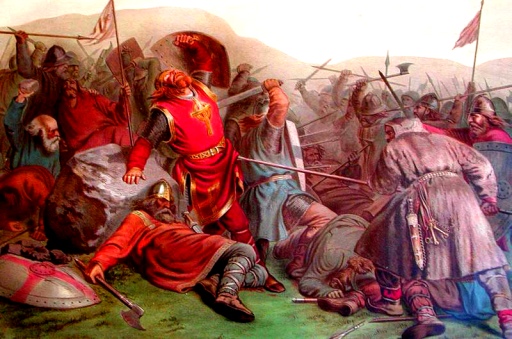
King Olaf was proclaimed a saint by Bishop Grimkjell (in 1031) one year after his death. For the local bishop to make this determination was the normal procedure in those far off days, though in St. Olav’s case, the pope also gave his approval. The bishop had many reasons to believe that his friend was with God, not least of which being that he had been the king’s spiritual advisor and knew very well the workings of his inner life. Then, too, the body remained incorrupt. This latter fact was recorded by multiple independent sources hundreds of years after his death and there are other accounts, half legend perhaps, of people who had seen the body. In one instance, the viewer was a descendant of King Olav, a (presumably baptized) trouble maker who was told later in a dream by St. Olav himself, to leave Norway or face the consequences. There were miracles. The chieftain, Kalv Arneson, who is supposed to have struck the fatal blow, repented. So did quite a few other people. It became the custom to pray to the dead king – the people had canonized him themselves.
After its first burial, St. Olav’s body was disinterred and finally enshrined at Nidaros (Trondheim) where a cathedral was later built. This became a place of pilgrimage where many miracles occurred. When the Lutherans took over, pilgrimages were banned, though presumably the heretics had no control over the miracle aspect. It would have been a fine thing if the good king had been permitted to appear to their founder, but alas, this did not happen. A few well chosen words to Martin Luther and his followers and – who knows.
Pilgrimages have in recent years started up again, not necessarily for religious reasons. The millennial anniversary of the saint’s death (August 2030) is approaching and this may be one reason for renewed interest. There is also some disaffection with and considerable neglect of the Lutheran Church in Scandinavia. We can only pray that St. Olav will touch some of his visitors, and that the Faith may be revived among his descendants.
Many thanks to Colleen Drippe’ for her excellent article.
Return to Roman Catholic Saints Home Page from Saint Olav
Now Available!!
Pelayo's resistance initiated the nearly 800-year-long Reconquista to take back his country from the ruthless invader who had conquered his homeland and sought to erase his culture and his faith. His actions would lay the foundations of a Kingdom for Christ that would eventually reach around the world and spread the Catholic faith to millions of souls. Read more...
Please help us continue to bring high quality books to our readers at the lowest possible price! Click the link below! Thank you!
Now Available!
Catholic Vitality Publications presents . . .Brand new by
James Fitzhenry
Now in paperback!
Battles - Honor - Miracles! This
book is filled with amazing stories of little-known Catholic heroes presenting
spectacles of bravery and valor never exceeded in all the annals of history. read more. . .
Now Available for $18.95
Also available:
Catholic Vitality Publications
Roman Catholic books currently published by Catholic Vitality Publications:
El Cid, God's Own Champion
-the amazing true story of the life of Rodrigo Diaz, El Cid!
Available for only $16.95
St. Fernando III
A Kingdom for Christ
- King St. Fernando III, born 100
years to the month after the death of
the Cid. His life was filled with miracles
and many conquests!
Available now for $26.95
Discounts available for bulk
orders and for bookstore
retail sales! Just contact us

